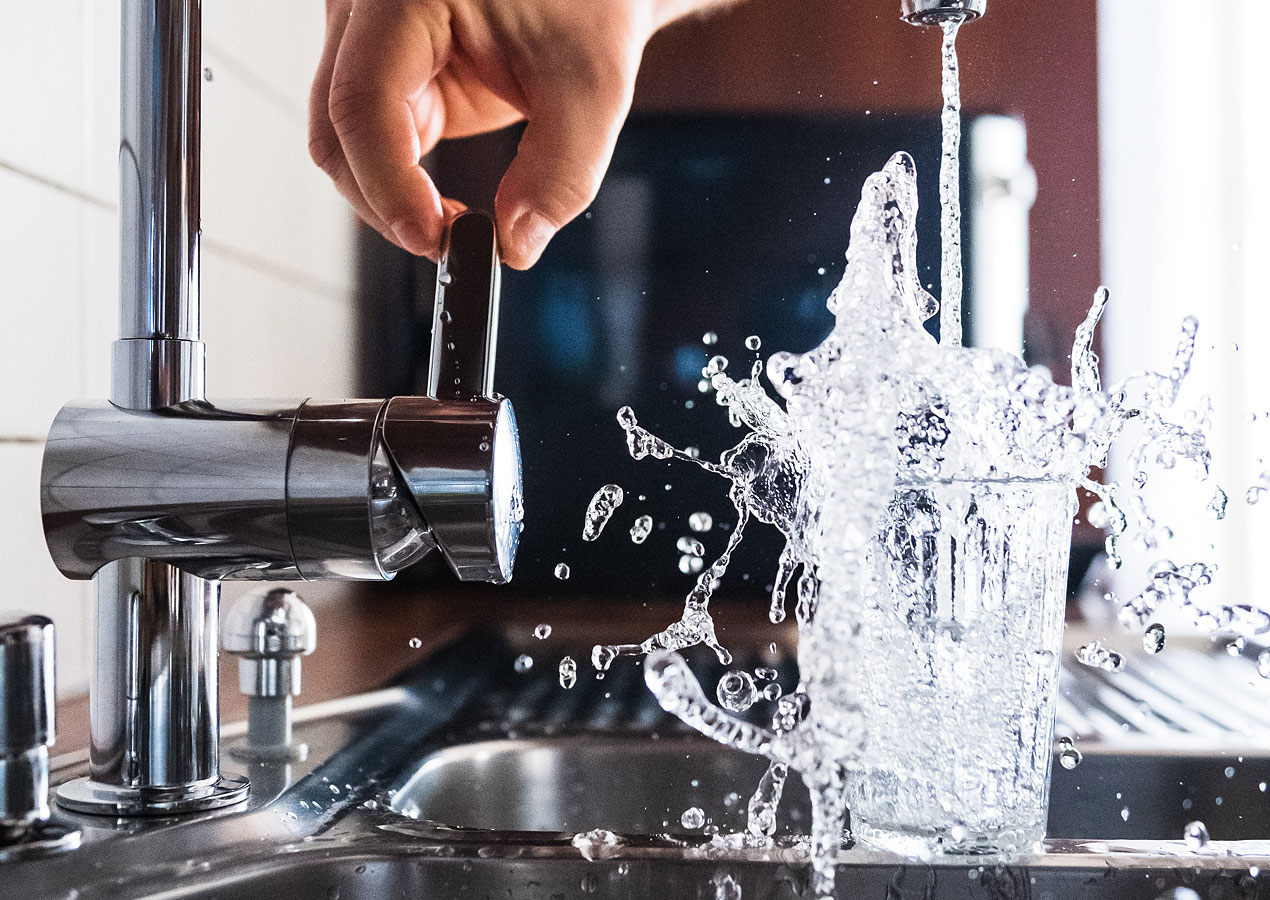
17 Feb Regulating Water Pressure in Your Home
Opinions differ on water pressure. What some may think is a powerful stream of water can seem like just a drip to others. However, the fact of the matter is, there is an optimal water pressure that all homeowners should shoot for—50 psi—that will ensure your home’s appliances, pipes and taps stay healthy for the foreseeable future. Fortunately, there are not only ways for homeowners to measure their own water pressure, but also ways to increase or decrease their water pressure with the help of a plumbing professional. And in Hawaii, certain factors need to be considered before changing your home’s water pressure, such as plumbing codes, where you are on the Oahu and your proximity to water pumping stations.
How to Measure your Water Pressure
Measuring your own water pressure is something every homeowner can—and should—do. You will need a water pressure gauge—most cost under $15 at any major home improvement store, like Home Depot—and access to a tap. (Like a hose bib outside or a laundry sink faucet will work.) Secure the pressure gauge to your tap and turn it on fully. Check the gauge reading to see what the water pressure of your home is, with the acceptable range of pressure being anywhere between 40 to 60 psi. If you have a water pressure below 30 psi, that could be a possible signal that your home has a leak, and incoming water pressure has to be under 80 psi in Hawaii according to the Uniform Plumbing Code (UPC) on Oahu, and for reasons we’ll dive in to later in the article.
How to Increase your Water Pressure
Ideally, you want your water pressure to be 50 psi. That is in accordance to the UPC on Oahu and Hawaii for water pressure in residential homes, and if your water pressure is under that mark, it’s time to consider getting a licensed plumber to help troubleshoot your issue. However, there are things you can do yourself to increase your water pressure.
Low Showerhead Pressure
If you notice you have lower water pressure coming from your shower, it’s possibly time to consider cleaning your shower head. Simply remove the shower head from the tap and give it a thorough rinse and scrubbing. If the water pressure is still low, you can also replace the entire shower head, which will be free of any limescale and have a new hose. Cleaning your taps as well could be a possible solution to your low psi. However, if none of these DIY methods work, there could be a larger problem such as a leak in your pipes or possibly an issue with your regulator.
How to Decrease your Water Pressure
If you notice the water pressure in your home is too high—exceeding the 50 psi benchmark—then it’s time to call a plumber to take a look at your water pressure regulator. A water pressure regulator—also known as a pressure-reducing valve, or PRV—is the unit that diminishes the amount of water pressure homes get from the system’s main water line, which is considerably higher than 50 psi.
Higher Pressure Near Water Pumping Stations
However, if your home is located near a water pumping station, you’ll actually need two PRVs to fully combat the high amount of water pressure in your main line, bringing it down to an operable level. This is not a do-it-yourself job, and you’ll want a licensed plumber on property to handle the issue. There are also different grades of water pressure regulators, so while you may not need to add another to your system, your current one could possibly have to be replaced to reduce the psi to the optimal 50 units.
The Issues With Excess Water Pressure
Having an excess of water pressure in your home—over 80 psi—can lead to numerous faults and problems in your plumbing system. These include, but are not limited to, leaky pipes, broken seals on the end of pipes, appliances breaking or creating loud, clanging noises and even higher water bills.
535 Plumbing – Your Water Pressure Experts
If you live on Oahu and are in need of a licensed plumber, choose 535 Plumbing for the job! Our team of professional Oahu plumbers are highly skilled and our excellent customer support representatives will work with you to schedule your appointments at a time you most convenient. Learn more and schedule an appointment by calling (808) 300-0535, or Visit Our Contact Us Page. Mahalo!


